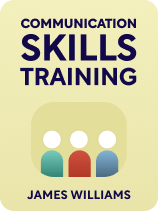

This article is an excerpt from the Shortform book guide to "Communication Skills Training" by James Williams. Shortform has the world's best summaries and analyses of books you should be reading.
Like this article? Sign up for a free trial here.
Have you been asked to speak in front of a group? Where should you start?
Whether you’re in school or on the job, you’re likely to be called upon to make a presentation. You might be asked to make a toast at a wedding or a eulogy at a memorial service. Opportunities for public speaking abound, and having the skills to prepare and deliver a talk can set you apart and put you ahead.
Keep reading to learn how to prepare a speech and deliver it.
How to Prepare a Speech & Deliver It
Williams argues that being able to effectively deliver public speeches or presentations is a crucial skill because it can expand your career options and professional network and help you share your ideas. (Shortform note: Public speaking is important not only for expanding career options and sharing ideas—experts note that it can also boost your confidence and help you overcome anxiety.)
Here are four tips on how to prepare a speech and execute an effective presentation.
Tip #1: Choose a Relevant, Helpful Topic
To engage your audience, Williams says you must understand them so you can select a topic that they’re interested in. The best way to interest them is by providing them with something they need—solutions, advice, or information. For example, imagine that you’re a guest speaker at a library event for kids who are bored at home for the summer. They probably want to learn about something fun they can do to pass the time. The topic of your speech can be about how to build a model volcano at home—something that will solve their problem of boredom.
(Shortform note: Other experts reiterate the importance of understanding your audience so you can pick an effective topic. They elaborate that you should specifically seek out information like the audience’s age, gender, beliefs, seniority, education, hobbies, experience, ethnicity, and employment. This will help you better determine what they’re interested in and what service you can provide that they might need.)
Tip #2: Write Your Speech
Williams says that the first step of writing your speech is researching all angles of your topic so you’re knowledgeable and can answer any questions you’re asked. (Shortform note: Researching thoroughly also allows you to develop unique insights that will make your speech stand out.)
Once you have this background knowledge, it’s time to write your speech. One possible speech structure is to start by catching the audience’s attention by introducing a problem they have that you can solve. Then, explain why they’re struggling to solve that problem and provide your solution. Next, provide facts supporting your solution, explain why it works, and show the audience how it’ll solve the problem. Conclude by calling your audience to take action.
(Shortform note: While Williams provides an effective structure for speeches that have a clear problem and solution, for other types of speeches, alternative formats may be more effective—for example, for speeches meant to entertain or inform. To write an effective speech, you must choose a structure that’s appropriate for your topic. For example, a problem-solution format won’t be effective for an informative speech about the history of AI. Instead, a chronological format may work best.)
Tip #3: Prepare for Your Presentation
Williams recommends practicing reciting your speech mostly from memory in the days before your performance—you don’t want to read your entire speech from a sheet of paper during your presentation. Instead, create notecards with refreshers of your main points that can help spark your memory during your speech.
(Shortform note: Consider practicing your speech in front of an audience—even if it’s just a few friends. This will help you get used to being in front of people so you’ll feel more confident during your presentation. Further, make your cue cards more user-friendly by including only one main idea per card, using a heading to indicate which part of the speech the card pertains to, and including plenty of blank space on the card so it’s easy to read from.)
Tip #4: Execute Your Speech
Williams says you must stand up straight and exude confidence while presenting—this will make people more inclined to listen to you. Further, be enthusiastic to get your audience excited, and speak to them in a conversational manner. If you come off as overly professional, the audience may struggle to relate to you and lose interest in your message.
(Shortform note: Chris Anderson, curator of TED, adds a few tips to help you effectively execute your speech. To exude confidence through your posture, keep your lower body grounded—swaying or shuffling your feet portrays nervousness. Instead, move your upper body—specifically, use hand gestures for emphasis and to portray enthusiasm. Further, Anderson warns not to be too enthusiastic or passionate, as this can disrupt your ability to be conversational with your audience—you must strike a balance.)

———End of Preview———
Like what you just read? Read the rest of the world's best book summary and analysis of James Williams's "Communication Skills Training" at Shortform.
Here's what you'll find in our full Communication Skills Training summary:
- Why effective communication is one of the most important skills to have
- How to develop your communication skills through intentional practice
- Why emotional control is central to expressing yourself effectively






